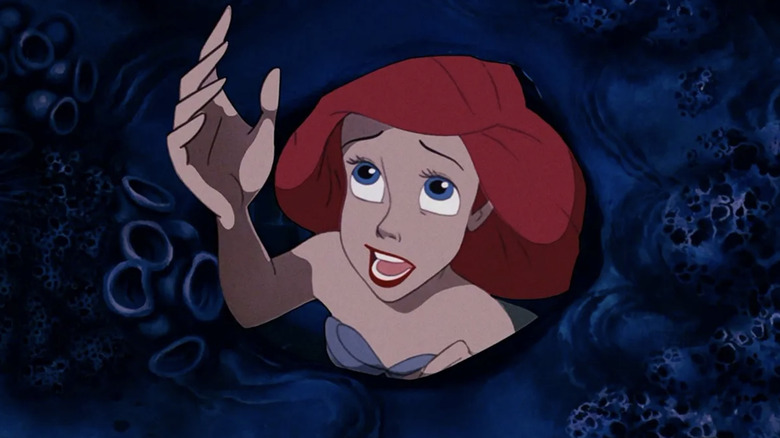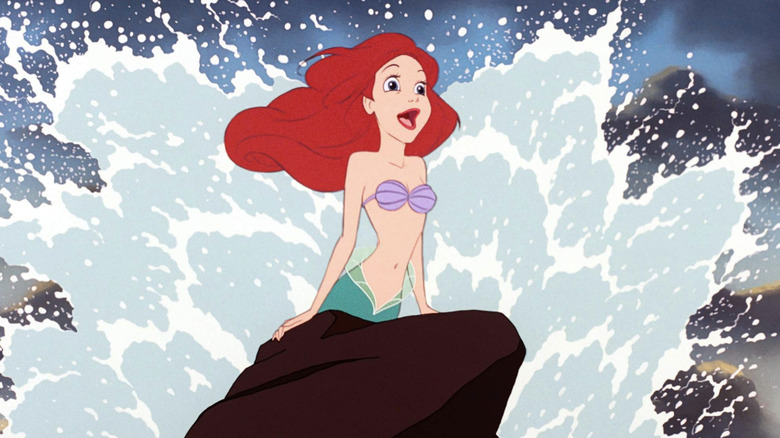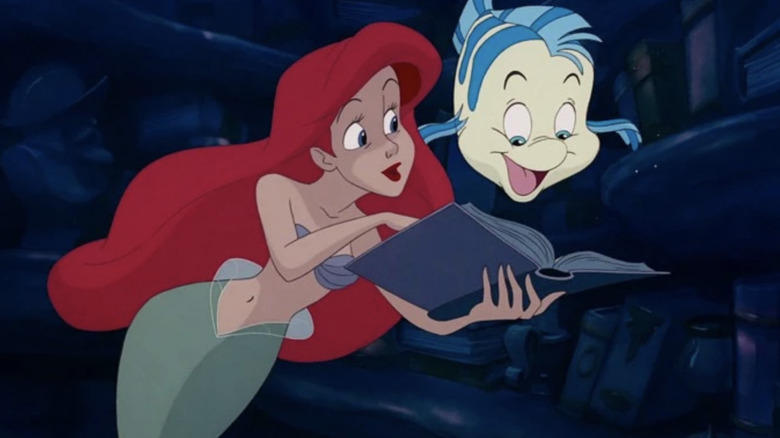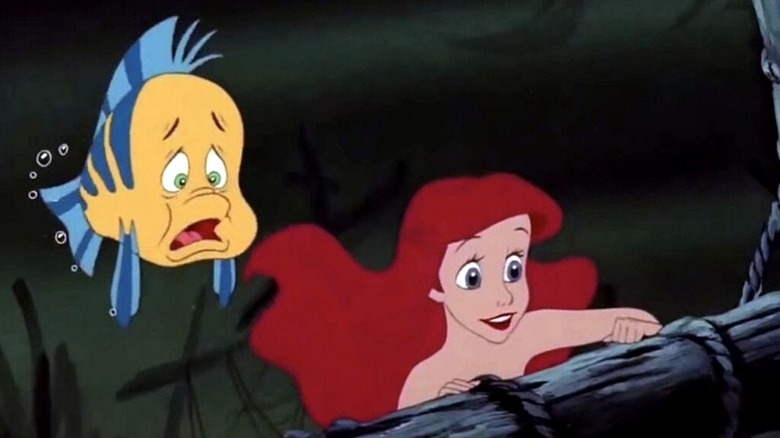The Little Mermaid's Original Story Was Dark, Disturbing, And Absolutely Bonkers
We may receive a commission on purchases made from links.
Nowadays, whenever someone hears the title "The Little Mermaid," they undoubtedly think of the 1989 Disney animated production. The coming-of-age story follows Ariel (voiced by Jodi Benson) as she ventures to the surface world, hoping to be a part of something more beyond her father's undersea kingdom. It's an age-old story, but one that continues to venture on in popular culture.
Based on the Hans Christian Andersen fairy tale of the same name, "The Little Mermaid" kickstarted what's known as the Disney Renaissance, bringing home two Academy Awards for the House of Mouse and spawning various prequels and sequels in the years following. In 2023, we even got a live-action remake.
But how close to the original story is Disney's "Little Mermaid?" Well, the truth is, there were quite a few changes made to the original material, which is a much darker "Little Mermaid" than you might expect. Like most fairy tales adapted by Walt Disney Studios, Ariel's story was given quite the facelift in order to make it suitable for younger audiences — well, at least modern ones. But although Disney's Ariel differs significantly from the mermaid originally crafted by Andersen, there are some things that tie both versions of this character closely together. If you don't know the original fairy tale, then let this be your first venture into the work of Hans Christian Andersen.
The Little Mermaid story was technically for kids - but very adult
Initially published in the first collection of Danish author Hans Christian Andersen's "Fairy Tales Told for Children" in 1837, "The Little Mermaid" tells the story of a young, unnamed mermaid who dreams of living on the surface. Every teenage mermaid is given a chance to spend some time on the surface during their fifteenth year, and though her sisters have no interest in pursuing a life up there, the Little Mermaid has a different experience. After watching the birthday party for a young prince, she is drawn to the young man and saves him from a massive shipwreck.
Having fallen for him, the mermaid decides to make a deal with a sea witch to become human and make him fall in love with her. Of course, there's a lot more to it than that. In Andersen's story, mermaids don't have an eternal soul, and the Little Mermaid longs for one as much as she does the love of the prince. The sea witch grants the mermaid's request to take human form in exchange for her soul, but warns her that she will always miss her tail (as it will transform into human legs), and each step on dry land will feel like she's walking on sharp objects. This proves true, but even though the Little Mermaid's feet continue to bleed throughout her time on land, she presses on, hoping that the prince will love her.
Unfortunately, the prince thought that someone else — a young princess staying at a nearby temple — was who saved him and doesn't see the mermaid for who she is. Andersen's "Little Mermaid" doesn't end with romance for the title character, and while there is a marriage that occurs, it's not between our heroine and her prince.
The biggest changes Disney made to The Little Mermaid story
But it's not just the ending that's different in "The Little Mermaid" — it's the entire story. Some might say that the classic stories behind the Disney Princess films are creepy, but "The Little Mermaid" actually has a more positive message than the animated film. Though Ariel's journey in the movie is all about finding true love and becoming human, half of her goal in the original tale is to gain a human soul. In fact, part of the motivation for finding a prince at all revolves around the fact that their union will grant her a soul when she dies. And even though the Little Mermaid doesn't find her happy ending with the prince, her story does end on a positive note — even if that note involves her death.
Distraught over their sister's misfortune, the Little Mermaid's older sisters make a deal with the sea witch themselves. In exchange for their lovely hair, the witch grants them a knife with which the Little Mermaid can kill the prince who scorned her. By doing so, she will be granted a human soul in return. But when it comes down to it, she's unable to kill the man she loves, or his new bride. This ends in the Little Mermaid's death, but while mermaids turn into sea foam upon their deaths, she ascends as an ethereal elemental spirit of the air (sometimes called a sylph) instead, granted a mermaid's 300-year lifespan so that she might continue to do good in the world. Talk about a higher calling.
Here's where you can find the original Little Mermaid story
Where can one read Hans Christian Andersen's original "Little Mermaid" story? Well, aside from the various fairy tale collections that one might find the short story in, the original fairy tale can be read for free online, including on The Hans Christian Andersen Center's website. While Andersen's story was originally written in his native Danish language, it was eventually translated and re-published in 1849 as part of a new "Fairy Tales" collection.
Though Disney's version of "The Little Mermaid" saturates the fairy tale market these days, the original still exists out there in print form. Because it's in the public domain, Andersen's "The Little Mermaid" can be found in various forms on Amazon, among other book retailers online.



